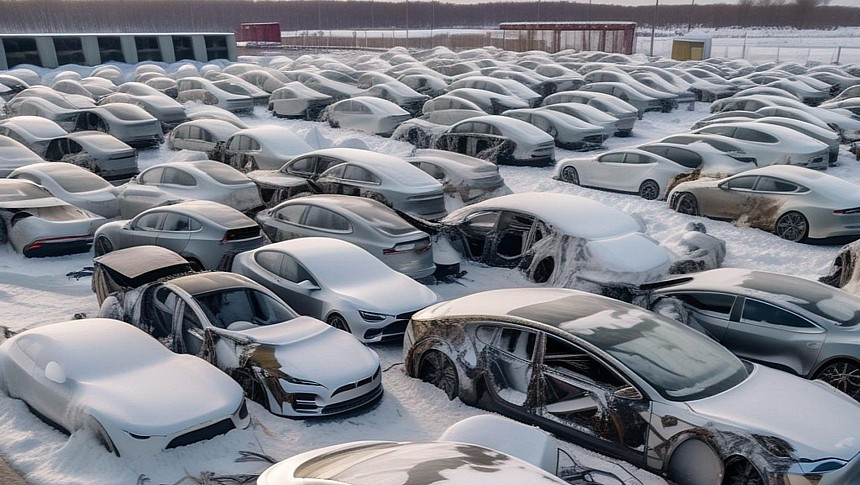In a report first broken, ironically enough, by the New York Times, residents of Chicago unfortunate enough to drive electric vehicles through the city's harsh winters are getting a crash course in the downsides of EV ownership when the weather gets particularly frigid. As a lethal combination of frigid temperatures and relentless pounding winds push EVs to the breaking point, one manufacturer, in particular, is facing especially harsh criticisms. Of course, the automaker in question is Tesla.
Even under ideal winter conditions, quite unlike the extremes in weather often displayed in Chi-town, electric vehicles are known for suffering longer charge times, decreased performance, and sometimes even total drivetrain failure. But as Chicagoans are coming to learn, Teslas are especially susceptible to cold-related pitfalls that affect the entire range of EVs on sale today. As Tesla supercharging networks from the North Side to the South Side and everywhere in between have become overloaded with lines down the block in some cases, Chi-town's Tesla owners are seeking answers.
In particularly adverse winter conditions, battery-electric cells require far more energy to fire up in the morning and lose their charge considerably faster as a result. The added energy needed to heat an EV's interior and keep vital driveline components within optimal operating temperatures leads to a battery drain situation, which, unless you plan on driving without heat in the dead of winter, isn't really solvable at this juncture. But what's typically a mild annoyance for most folks living in more temperate climates, the blistering -30 Fahrenheit wind chill native to the Windy City is taking a battery EV's weakest traits and exacerbating them to the point of being near crippling to Teslas in particular.
Though the main source of the issue befalling Tesla EVs in Chicago can't be solved, Tesla themselves have offered a handful of solutions to help its residents brave the frigid temperatures in their EVs and avoid situations that might leave them stranded, or unable to leave the garage for work in the morning. If possible, Tesla highly recommends keeping the vehicle's battery charge level above 20 percent, as the stage when the vehicle is charging from flat-dead to this level is by far the most energy-intensive. Alternatively, Tesla also recommends using their vehicle's integrated "schedueled departure" feature, allowing Tesla's proprietary software to determine the best points in the day to find a supercharger station and juice up in these crippling winter conditions.
But even so, frosty January mornings, once just an inconvenience for Chicagoans in their ICE vehicles, have become something of a nightmare for EV drivers. It's a problem that, at least for the moment, has no one clear path toward a solution, much to Chi-town's eternal chagrin.
In particularly adverse winter conditions, battery-electric cells require far more energy to fire up in the morning and lose their charge considerably faster as a result. The added energy needed to heat an EV's interior and keep vital driveline components within optimal operating temperatures leads to a battery drain situation, which, unless you plan on driving without heat in the dead of winter, isn't really solvable at this juncture. But what's typically a mild annoyance for most folks living in more temperate climates, the blistering -30 Fahrenheit wind chill native to the Windy City is taking a battery EV's weakest traits and exacerbating them to the point of being near crippling to Teslas in particular.
Though the main source of the issue befalling Tesla EVs in Chicago can't be solved, Tesla themselves have offered a handful of solutions to help its residents brave the frigid temperatures in their EVs and avoid situations that might leave them stranded, or unable to leave the garage for work in the morning. If possible, Tesla highly recommends keeping the vehicle's battery charge level above 20 percent, as the stage when the vehicle is charging from flat-dead to this level is by far the most energy-intensive. Alternatively, Tesla also recommends using their vehicle's integrated "schedueled departure" feature, allowing Tesla's proprietary software to determine the best points in the day to find a supercharger station and juice up in these crippling winter conditions.
But even so, frosty January mornings, once just an inconvenience for Chicagoans in their ICE vehicles, have become something of a nightmare for EV drivers. It's a problem that, at least for the moment, has no one clear path toward a solution, much to Chi-town's eternal chagrin.






